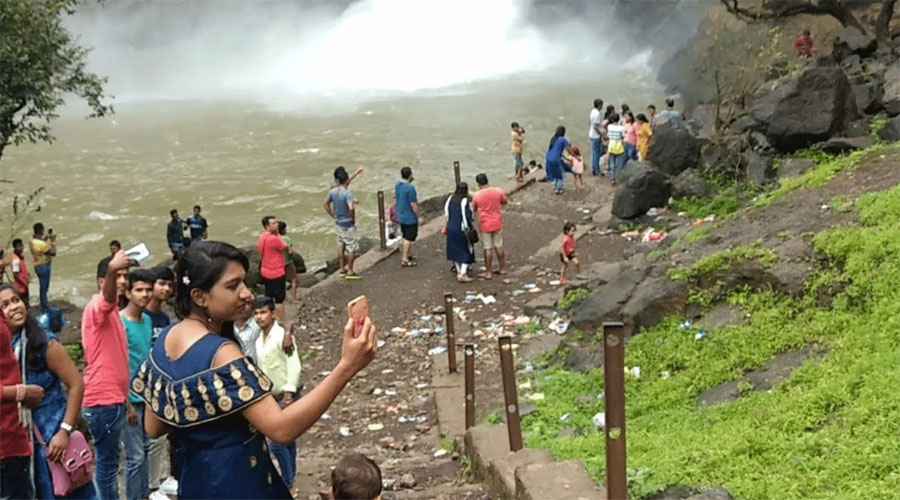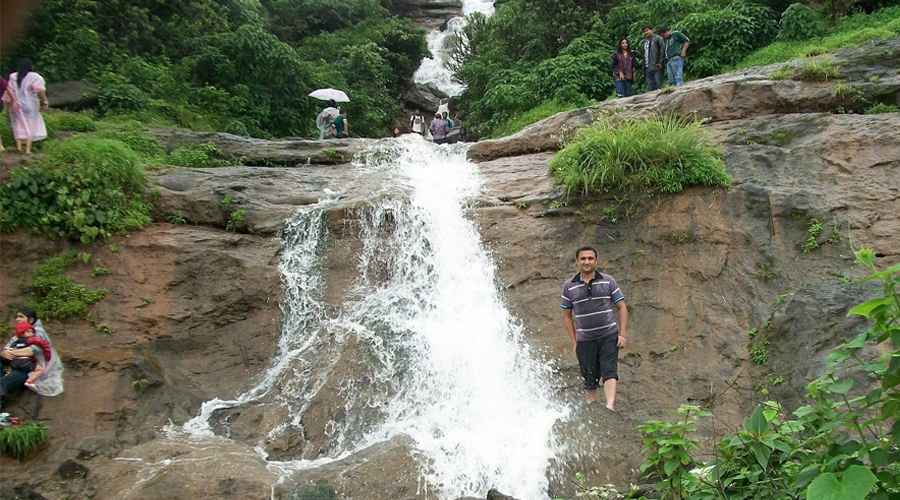Nestled in the verdant hills of Dalhousie, Himachal Pradesh, the Panchpula Waterfall stands as one of North India’s most enchanting and tranquil escapes. Famed for its cascading waters, lush meadows, and the symphony of multiple streams converging amidst pine and deodar forests, Panchpula has long captivated nature lovers, families, and adventure seekers alike.
The Name and Location
“Panchpula” literally means “five bridges” in Hindi. This uniquely descriptive name originates from the confluence of five mountain streams that merge at this very spot, forming an awe-inspiring waterfall and foamy streams that snake through the rocks below. Located just 3–4 km from Dalhousie town, in the scenic Chamba district of Himachal Pradesh, Panchpula is easily accessible via a short and picturesque drive or a moderate trek from the bustling town center. Its proximity makes it a favorite stop for both day-trippers and those seeking an extended retreat amid the beauty of the Himalayas.
A Symphony of Streams and Verdant Valleys
View this post on Instagram
The visual and sensory experience at Panchpula is nothing short of magical. Here, the water—often at its most powerful during the monsoon (July–September)—tumbles over mossy rocks, creating a mesmerizing spectacle and a soothing soundtrack of nature. The waterfall’s catchment is surrounded by expansive meadows, natural pools, and shaded patches beneath towering pine and deodar trees, making it a perfect spot for a family picnic, a photography session, or simply sitting in silent contemplation.
It is this abundance of greenery and the blush of wildflowers that renders Panchpula breathtaking in any season, though it is particularly resplendent during the rainy months when the waterfalls are in full spate. In the drier months, the trails are more inviting—a paradise for trekkers and those eager to explore the hilly terrain.
Historical and Cultural Resonance
Beyond its natural allure, Panchpula is steeped in historical and cultural significance. It is most solemnly remembered as the final resting place of Sardar Ajit Singh, a valiant freedom fighter and the uncle of the legendary Bhagat Singh. At the site where the streams meet, visitors will find a monument and samadhi dedicated to his memory, standing as a silent witness to India’s struggle for independence. Many visitors stop here to pay tribute, adding a moment of reflective pause to their journey.
The Satdhara Springs: Nature’s Healing Touch
As you approach Panchpula, you’ll pass by the Satdhara Springs (“Seven Streams”), a source of crystal-clear water rich in mica and minerals. The springs, fed by mountain rains and snowmelt, are believed by locals to possess medicinal properties that can alleviate skin ailments, fever, and digestive issues. Many tourists pause to drink from the springs or take home a bottle of the magical water—an age-old tradition that endures even today.
Adventures and Activities
Trekking and Outdoor Experiences
Panchpula is the starting point for several well-loved trekking routes. Whether you’re a seasoned trekker or a casual hiker, the region promises rewarding trails with panoramic views of snow-capped Dhauladhar ranges and deep green valleys. One popular trek ascends to Dainkund Peak, Dalhousie highest point, while others wind towards the Kalatop Wildlife Sanctuary, Ganji Pahari, and more.
For those seeking an adrenaline rush, adventure activities such as zip-lining and rock climbing are organized by local operators, especially during the peak season from March to June and July to September. The blend of adventure and nature ensures that Panchpula appeals to visitors across generations.
Picnic and Leisure
If leisure is your priority, Panchpula is the ideal place to spread a blanket beneath the pines and enjoy a tranquil picnic by the streams. State tourism departments have developed small restaurants and refreshment stalls, ensuring visitors can enjoy local snacks and beverages while soaking in the mountain air.
Best Time to Visit
Panchpula has charm in every season, but the summer months (March to June) and the monsoon (July to September) are considered the best times to experience the waterfall in all its glory. During monsoon, the water volume is at its peak, while the surroundings bloom in shades of green and wildflower pinks. In summer, the weather is cool and pleasant, perfect for picnics and trekking. Panchpula is open daily from 9 AM to 6 PM.
Responsible Tourism and Travel Tips
- No Entry Fee: Panchpula is open to all and does not require the purchase of a ticket.
- Accessibility: Located 3–4 km from Dalhousie, one can hire a taxi, drive, or walk on a well-kept pathway. It is suitable for both children and elderly visitors.
- Preserving Nature: Tourists are encouraged to maintain the natural beauty by disposing of waste properly and avoiding unnecessary noise or disturbance to wildlife.
Nearby Attractions
Panchpula can be clubbed with tours to other highlights of Dalhousie and Chamba, such as:
- Kalatop Wildlife Sanctuary: A haven for Himalayan flora and fauna.
- Khajjiar: Often called “Mini Switzerland,” a lush meadow ideal for family excursions.
- Dainkund Peak: Trek to witness striking views and mountain serenity.
- Chamera Lake: Known for its boating and serene surroundings.
Panchpula: A Place That Captures the Heart
Panchpula Waterfall remains more than just a tourist attraction; it is a destination where history, culture, and nature meet. It bestows a sense of wonder upon every visitor—through the thunder of falling water, the whisper of legends past, and the silent embrace of ancient forests. Whether you seek solace, adventure, or a deeper connection to Himachal’s natural and cultural heritage, Panchpula is an experience that lingers long after the journey ends.


